LUCÍA SANROMÁN

“The politics of what they (artists) are attempting to do, their stories, narratives, and approaches reposition the marginalized. So that’s really important to me as a curator, to pierce the systems of power, whether that be the institution, even the institution I work for, and allow for other voices to be heard and other knowledges to be created.”
Interview by Jen Huh, Director
Lucía Sanromán joined Yerba Buena Center for the Arts (YBCA) as Director of Visual Arts in October 2015. Over the course of her career, she has curated groundbreaking exhibitions throughout the United States, Mexico, and Latin America. Recent projects at YBCA include, among others, Teddy Cruz and Fonna Forman: Visualizing Citizenship: Seeking a New Public Imagination (2017) and Damon Rich & Jae Shin Hector: Space Brainz—Yerba Buena 3000 (2017–18) (both co-organized with Martin Strickland, Associate Director of Public Programs, YBCA); as well as Tania Bruguera: Talking to Power / Hablándole al Poder (2017) (co-curated with Susie Kantor, Associate Curator of Visual Arts, YBCA), and Futurefarmers: Out of Place, in Place.
Jen Huh (JH): Yerba Buena Center for the Arts (YBCA) is a unique institution. For those who may be unfamiliar, can you provide us a bit of background on the Center?
Lucía Sanromán (LS): YBCA opened in 1993 in the midst of the diversity movement in the United States. It was the first art center in the nation dedicated to diversity as a primary focus. Its first curatorial team (Renny Pritikin, René de Guzman, and Arnold J. Kemp) were very conscious of YBCA’s role as a site for experimental art of the Bay Area, popular culture, and community practices. Since then the organization has gone through many shifts and iterations, but today we have an arts institution that inherits that history. Under the leadership of CEO Deborah Cullinan, who joined YBCA in 2013, we are moving forward to become a place that questions and addresses notions of citizenship, in relation to San Francisco and the Bay Area, but also in terms of the role of art and culture as a catalyst for social change.
Yerba Buena Center for the Arts Exterior. Courtesy of Yerba Buena Center for the Arts. Photo: Tommy Lau.
JH: This year marks YBCA’s 25th anniversary. How is YBCA celebrating this milestone?
LS: The 25th anniversary celebration will take place over the span of a year. We begin the celebration with the launch of Bay Area Now 8 (BAN8), which is the eighth edition of the signature exhibition that YBCA started in 1997. BAN8 allows us to begin the celebration on the right focus as it is all about Bay Area visual artists and architects and designers; after this, YBCA has planned other public moments, such as the YBCA100 Summit in November.
JH: As you mentioned, this will be the eighth edition of the triennial exhibition Bay Area Now. Can you give us some context/background on the exhibition and its importance to the Bay Area art scene?
LS: In 1997, Bay Area Now was the first diagnostic regional triennial in Northern California, the most important, and the largest. By “diagnostic” I mean that, as is often the case with regional invitational exhibitions, it was meant to present the “best,” most relevant work of Bay Area contemporary artists, and originally the curators (Renny, René, and Arnold) were really intent on making it also a very vibrant and diverse exhibition with fair and equitable representation along race and gender lines. For our edition, and also to celebrate YBCA’s 25th Anniversary season, we the curators of BAN8 (me; Susie Kantor, Associate Curator of Visual Arts; and Martin Strickland, Associate Director of Public Programs) decided about a year ago to begin an investigation into the history of the exhibition. We invited Qianjin Montoya, a young curator and graduate of California College of the Arts’ (CCA) Curatorial Program, to research each edition, and to interview past curators and artists. This is presented in the show and in the brochure because it is very important for us to understand where this exhibition has been, and how the current edition is a continuation of certain elements that have been present throughout, but it's also different in that we invited Bay Area architects and designers to participate as a way to again address the idea of the role of creative participants in the making of the city, which of course goes beyond infrastructural material culture.
Bay Area Now 8 is curated by YBCA Director of Visual Arts Lucía Sanromán (center) and Associate Curator of Visual Arts Susie Kantor (left), while the architecture and design portion is curated by Associate Director of Public Programs Martin Strickland (right). Sanromán, Kantor, and Strickland in exhibiting artist Sadie Barnette’s installation at Yerba Buena Center for the Arts, 2018. Courtesy of Yerba Buena Center for the Arts. Photo by Harley Wong.
In an echo of the process followed for the first Bay Area Now in 1997, Susie and I did between fifty and sixty studio visits, as well as reviewed hundreds of submissions that we informally requested from colleagues and artists. Martin was doing the same for architects and designers as part of his work as the lead organizer for our exhibition program The City Initiative.
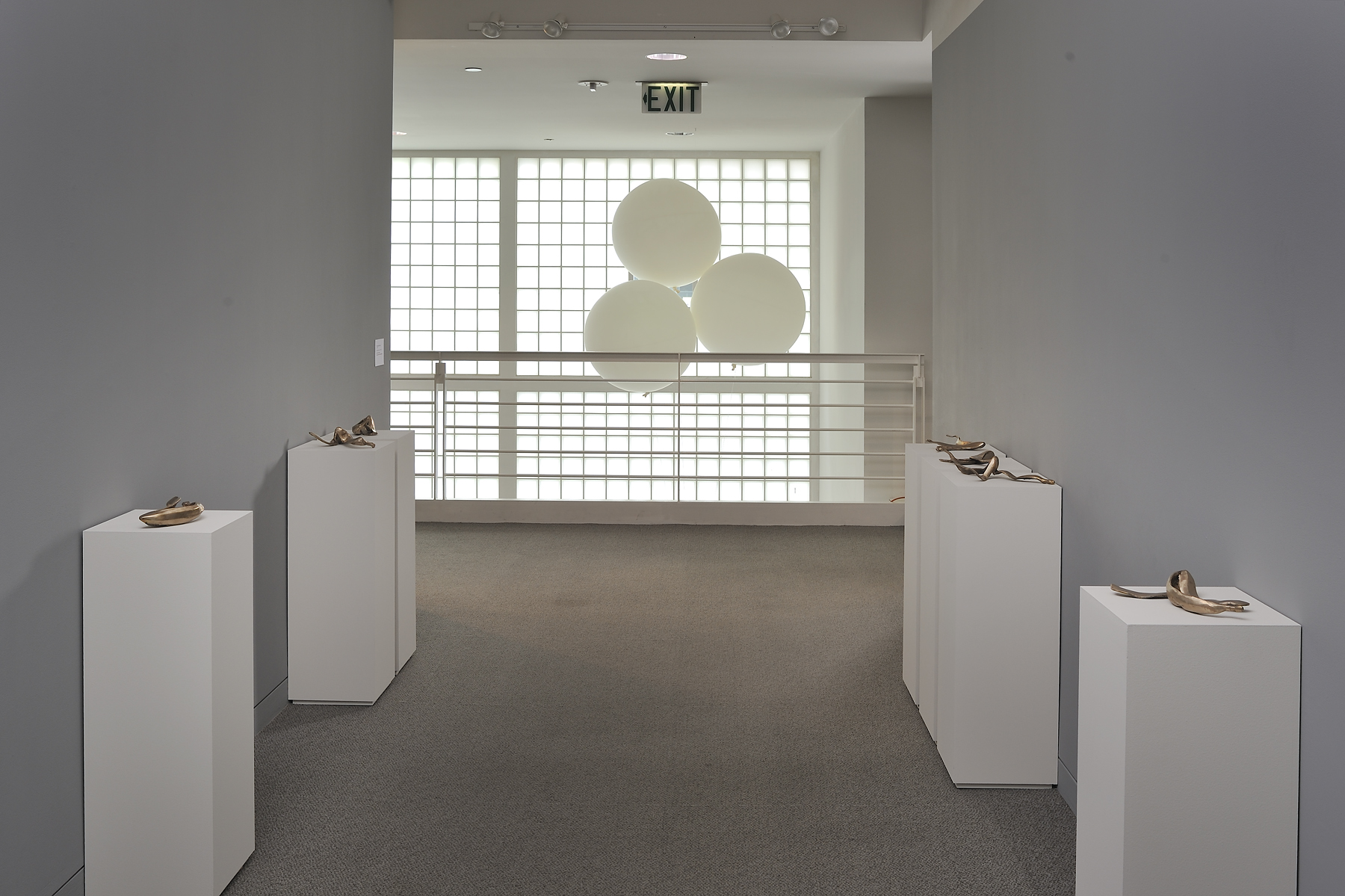
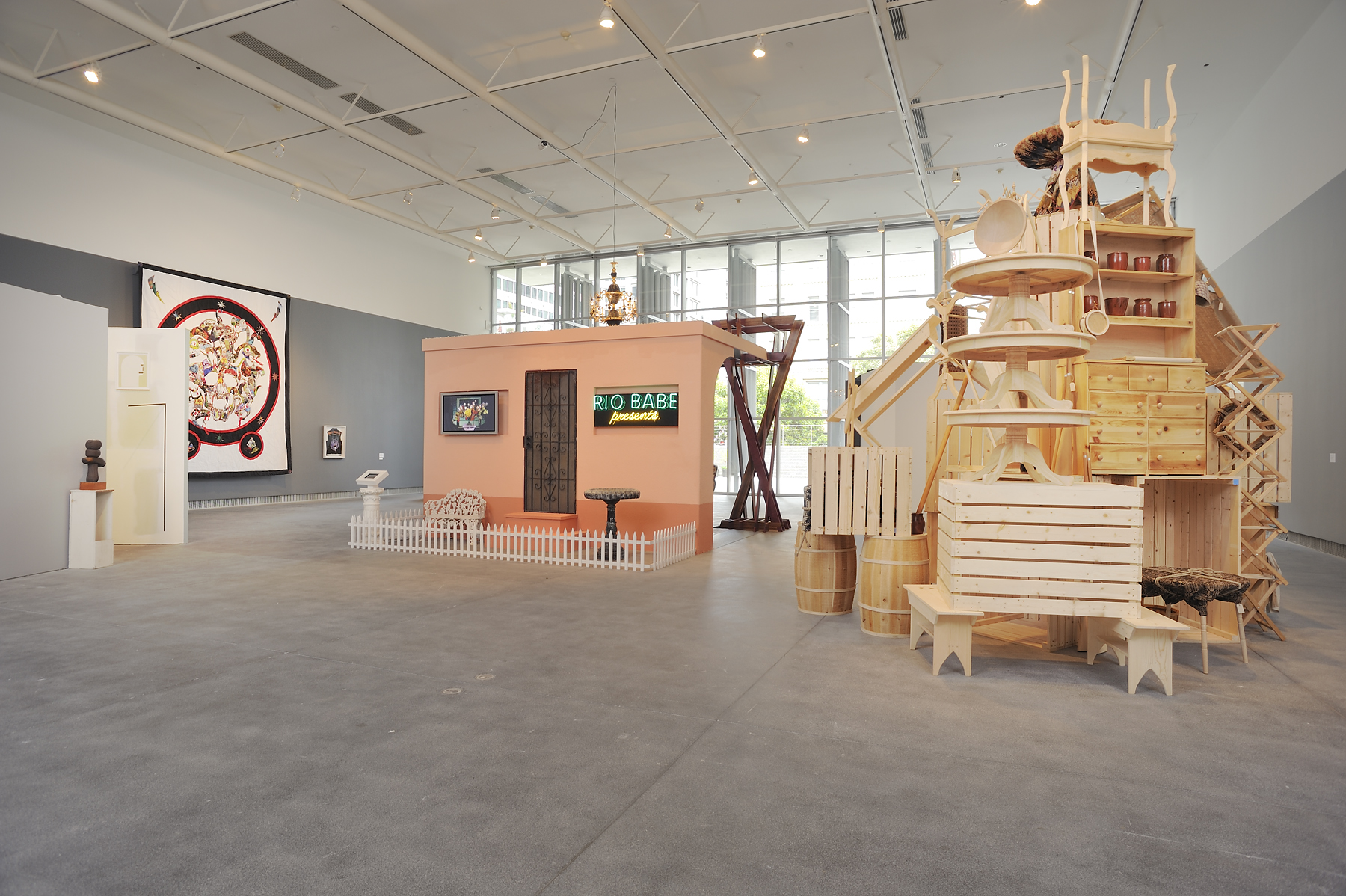
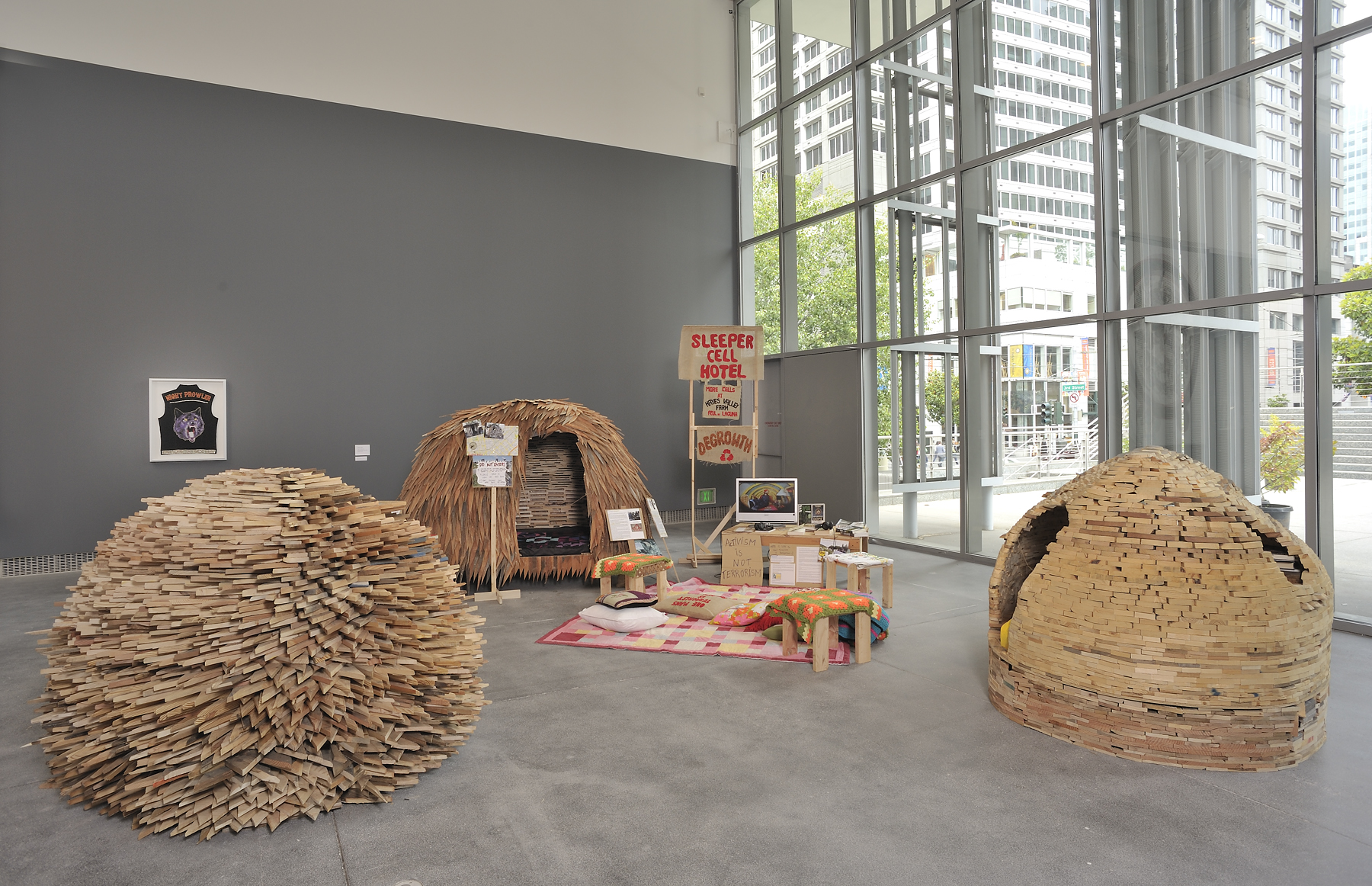
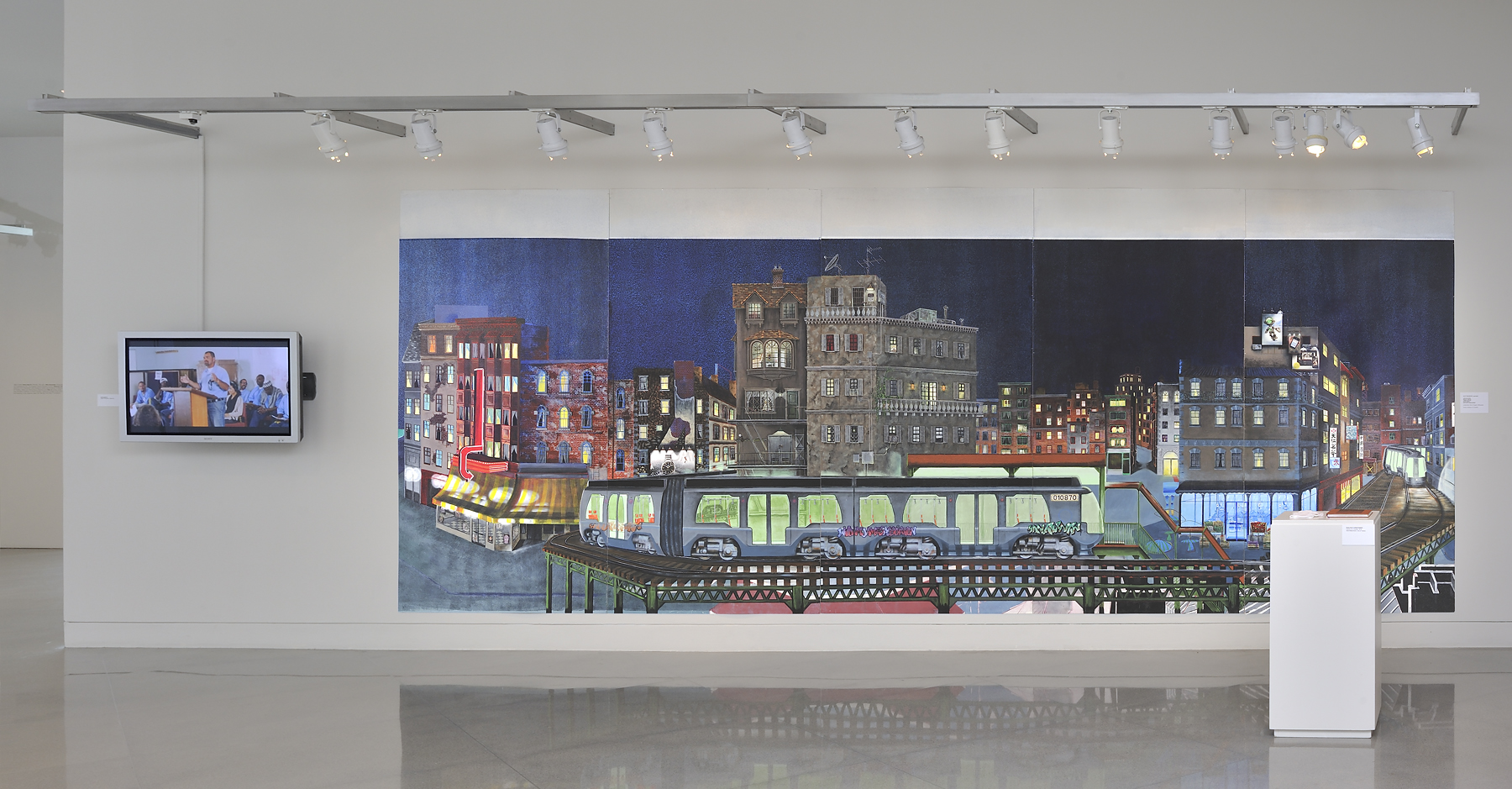
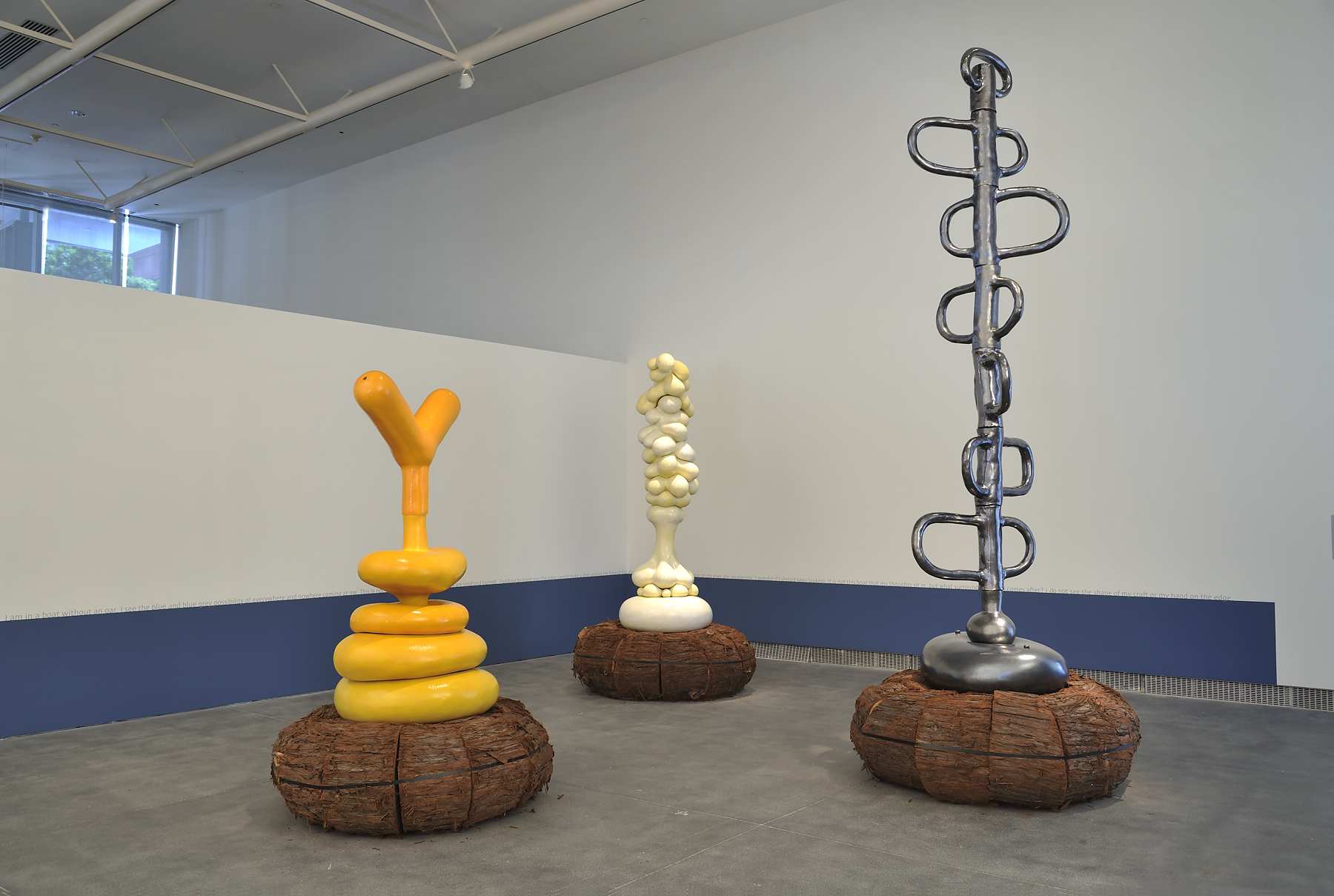

JH: Thank you for sharing the curatorial process for BAN8. Can you also share with us some insight into your curatorial direction and what will be on display?
LS: The exhibition is co-curated by Susie Kantor, Martin Strickland, and myself. The resulting exhibition, which we are putting the finishing touches on now, is I think very exciting and unusual. It presents existing but also a lot of newly commissioned works by nineteen Bay Area contemporary artists and six architects and designers. As I mentioned, YBCA’s mandate is to be a citizen institution taking an inquiry-based approach to issues of public concern, with a focus on the city as a nexus of social change. The inclusion of architects and designers responds to this, but also to a need to present a broader view of practices around the Bay Area that draw out the potentials of in-between thinking—a kind of thinking that is more necessary than ever in the face of gentrification, growing inequities and xenophobia, global climate change, and other dire conditions.
Bay Area Now 8, installation view, Yerba Buena Center for the Arts, San Francisco, 2018. Artists: Nicki Green (sculptures) and Marcela Pardo Ariza (photography). Courtesy Yerba Buena Center for the Arts. Photograph by John Foster Cartwright.
Urban Works Agency, A Seat at the Table, 2017, installation view, Bay Area Now 8, Yerba Buena Center for the Arts, San Francisco, 2018. Courtesy Urban Works Agency.
Taravat Talepasand, Westoxicated, 2015–18, installation view, Bay Area Now 8, Yerba Buena Center for the Arts, San Francisco, 2018. Courtesy Yerba Buena Center for the Arts. Photograph by John Foster Cartwright.
The show is both nuanced and loud, and it turns out that there are echoes across fields and disciplines that we could not predict. As we note in the gallery texts, remarkably, despite the troubling times in which we are living, their work together offers a picture of a resilient Bay Area. Many use materials as surrogates for gender, identity, and environmental politics, pointing to a hybrid, in-between space where rigid dichotomies are rejected.
For Bay Area Now 8, Taravat Talepasand reconsiders the ideological assumptions that index Iranian identity, state power, and gender. Yerba Buena Center for the Arts, San Francisco, September 7, 2018–March 24, 2019. Courtesy of Yerba Buena Center for the Arts. Photo: Mark Mahaney.
Woody De Othello exhibits his large, anthropomorphic ceramic sculptures in Bay Area Now 8, Yerba Buena Center for the Arts, San Francisco, September 7, 2018–March 24, 2019. Courtesy of Yerba Buena Center for the Arts. Photo: Mark Mahaney.
Sadie Barnette presents a site-specific installation in Bay Area Now 8, Yerba Buena Center for the Arts, San Francisco, September 7, 2018–March 24, 2019. Courtesy of Yerba Buena Center for the Arts. Photo: Mark Mahaney.
Cate White’s paintings in Bay Area Now 8 explore the relationships between identity and power. Yerba Buena Center for the Arts, San Francisco, September 7, 2018–March 24, 2019. Courtesy of Yerba Buena Center for the Arts. Photo: Mark Mahaney.
Josh Faught’s practice of combining textiles, pop culture references, and archival materials will be featured in Bay Area Now 8, Yerba Buena Center for the Arts, San Francisco, September 7, 2018–March 24, 2019. Courtesy of Yerba Buena Center for the Arts. Photo: Mark Mahaney.
JH: YBCA is a non-collecting institution, which makes each visit distinctive and ephemeral. What are some of the challenges and opportunities of curating for an institution like YBCA?
LS: As an arts center, YBCA has historically provided opportunities as a very experimental space with the commitment to social and political causes. Our board is progressive and not entirely made up of collectors. This is great, because it has allowed for an organization that can be aligned on its social commitments and political values without pressure from a board invested in monetizing art, something that at times happens in mainstream art institutions—although I should add that good collectors are often also good patrons
Of course, the main challenge from not having the support of collectors in a systematic manner is that YBCA has to find an alternative to that system of patronage and funding. Given that in other countries, the arts are funded by the government, YBCA has had to focus on alternative funding streams, and the pressure of that can be exhausting.
JH: Prior to joining YBCA in 2015, you shaped exhibitions in Southern California and Mexico City. Can you please share a bit about your approach as a curator? How has living in the Bay Area impacted your approach?
LS: There are two things that have influenced my curatorial approach. One of them is that I am an immigrant. At the age of fourteen, I moved to Canada, and I hold Canadian citizenship, lived in the border between the United States and Mexico—Tijuana and San Diego—Mexico City, and now reside here in San Francisco. So this hybrid, migrant identity is a very strong part of my personality. I understand what it’s like to migrate and to have your roots within you, and not in the things you carry with you or the places you inhabit.
The second thing that has become very important to me is to use the power that having a public platform gives you to give to others, and create a program that prioritizes that which is structurally underrepresented. And that’s a tricky thing, because sometimes that means the artists that are dealing with these issues best are not necessarily the ones that a broad audience will say, “I get it; I like it.” The politics of what they are attempting to do, their stories, narratives, and approaches reposition the marginalized. So that’s really important to me as a curator, to pierce the systems of power, whether that be the institution, even the institution I work for, and allow for other voices to be heard and other knowledges to be created. It’s not easy and there is no set way to do this and sometimes this is not what the “general public” wants to see.
Yerba Buena Center for the Arts Interior. Courtesy of Yerba Buena Center for the Arts. Photo: Drew Altizer.
JH: One of YCBA’s mission platforms is “a commitment to inquiry, and asking the urgent questions of our time.” What are your urgent questions of our time?
LS: My urgent “questions of our time,” unfortunately, seem to be the same urgent questions that this society had twenty and thirty and forty years ago. “The liberal policies that were instituted these past decades are being challenged, so how do we ensure that those gains are not set back?”
JH: Let’s end on a lighter note, where can you get the best cup of coffee and what is your favorite Bay Area activity outside of curating/working in art?
LS: I don’t have a place for the best cup of coffee, but I do have a best place for noodles, which is House of Pancakes on Taraval and 19th Avenue after my favorite Bay Area activity—which is walking or bicycling at Ocean Beach in the Sunset.
Bay Area Now 8
September 7, 2018–March 24, 2019.
Yerba Buena Center for the Arts
701 Mission St, San Francisco, CA 94103
Featured image: Lucía Sanromán, Director of Visual Arts at Yerba Buena Center for the Arts. Photo: Kate Russell.
